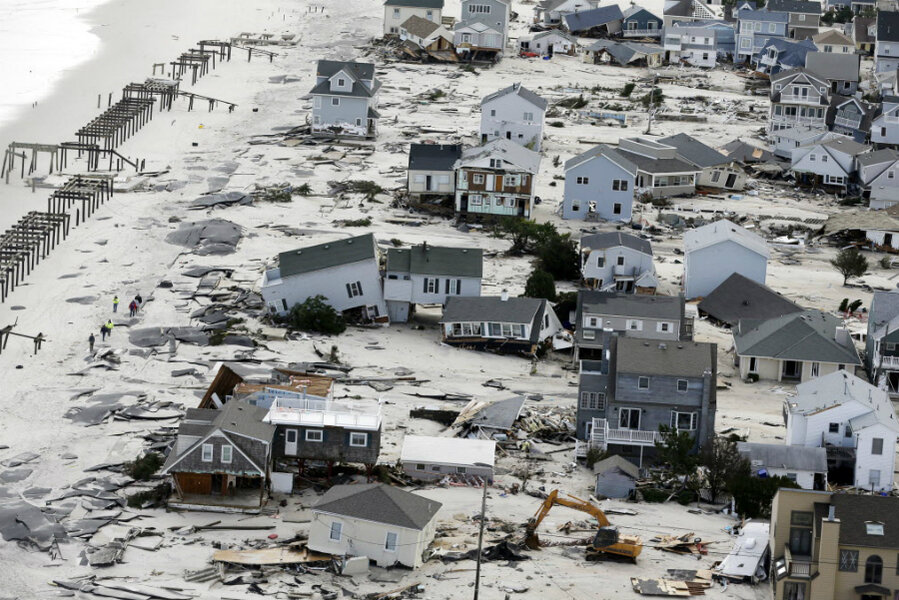When storm Sandy struck, help was as close as neighbor next door, poll finds
Loading...
| Washington
A newly released survey of people affected by superstorm Sandy offers a lesson for disaster response anywhere: Crucial help can come from having a well-knit neighborhood before trouble strikes.
Consider two key findings from the poll of communities affected by the 2012 storm:
First, survey respondents said the most important sources of help before, during, and after the storm were friends, family, and neighbors, as well as first responders. That finding doesn’t diminish the importance of support from groups like the National Guard, the Federal Emergency Management Agency (FEMA), or the Red Cross. But it says something significant about your friend next door.
Second, people who view their neighbors as engaged in problem solving are three times more likely to say their community is well prepared for a disaster, relative to people in communities that lack such cohesion.
Those findings were reported by the Associated Press-NORC Center for Public Affairs Research, which polled in 12 New Jersey and New York communities affected by the storm.
“Our survey data powerfully illustrate how important the help of friends, family, and neighbors can be in getting people back on their feet after natural disasters,” said Trevor Tompson, director of the AP-NORC Center, in releasing the survey. “These crucial social bonds are often overlooked as policy discussions tend to focus on the role that official institutions have in fostering resilience.”
Though perhaps too often overlooked, the importance of such community response in disasters has been documented again and again.
Daniel Aldrich, a political scientist at Purdue University in West Lafayette, Ind., has found evidence from around the world that disaster response hinges vitally on how neighbors and friends help one another – and more broadly the “social capital” that knits healthy communities together.
FEMA itself says it “places tremendous value on communities that embrace a local ‘Neighbors Helping Neighbors’ approach.” The agency cites survey research finding that “46 percent of individuals expect to rely a great deal on people in their neighborhood for assistance within the first 72 hours after a disaster.”
The AP-NORC survey finding – that communities feel more confident about facing adversity when they have such social bonds – held true regardless of average income levels in those places.
Some of the poll’s other findings:
- About two-thirds of the poll respondents in affected areas said they got help from neighbors in recovering from the storm.
- Respondents said organized charities, such as food banks, and relief organizations, such as the Red Cross, were very helpful – and rated higher than state or federal governments or utility companies – in the wake of the storm.
- In the most affected areas, 80 percent of people relied on face-to-face communications, followed by cellphones, land-line phones, e-mail, and social media networks like Facebook.
- Some 77 percent of respondents in affected communities said the storm brought out “the best” in their neighborhood, while 7 percent said “the worst.” Another 7 percent volunteered the answer, “both.”
US officials have attributed more than 130 deaths and $66 billion in damage to the storm. The poll found that communities are still recovering, with 55 percent saying their area has “completely recovered” and 33 percent saying recovery is halfway there or less.








